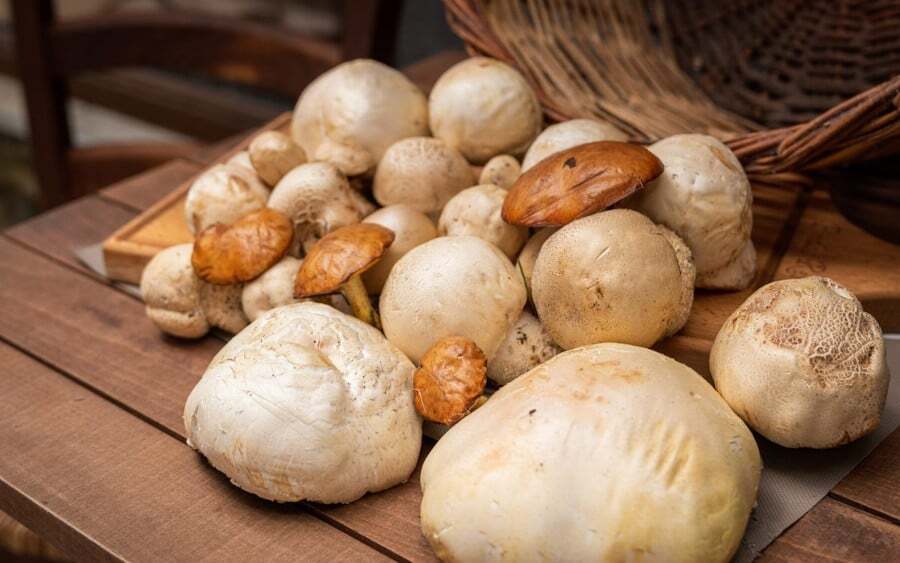Mushroom hunting: Where to hunt the delicious wild edible mushroom species that thrive in the lush forests of Macedonia, Epirus, Thessaly, and more. Mushroom hunting in these regions is a cherished activity.
1. VALIA CALDA
The name Valia Calda, which means “warm valley” in the Aromanian language, refers to the area’s unique microclimate; indeed, when the rest of Grevena freezes over, the valley’s temperature remains higher, allowing fungi to keep growing.
For those passionate about mushroom hunting, the excitement of discovering unique fungi species is unparalleled.
Mushroom hunting enthusiasts will appreciate the breathtaking landscapes and diversity of fungi found here.
Among the treasures of mushroom hunting, you will find an array of edible fungi waiting to be discovered.
The thrill of mushroom hunting draws many to these lush regions, where nature’s bounty is ripe for exploration.
For avid mushroom hunting fans, the chance to spot rare species elevates the experience to new heights.
Engaging in mushroom hunting here allows you to explore the unique microclimate surrounding Valia Calda.
Different varieties of mushrooms can be spotted amid the dense vegetation comprising black pine, oak and shrubs; those that prevail, however, are the porcini and parasol mushrooms in shrubby areas and the meadow mushroom in mountain plains.
Mushroom hunting here offers opportunities to connect with nature and discover its hidden gems.
This area is a prime location for mushroom hunting, particularly for the rare species found in this rich environment.
Here, one particular species stands out: the rare tricholoma – a type of matsutake – which is only found here and in the region of Florina, thanks to the presence of red pine (Valia Calda has the southernmost population of this species in the Balkans).
As you venture into the forests, mushroom hunting becomes an adventure filled with delightful surprises.
The beauty of mushroom hunting is not just in the collection but in the journey through nature.
Mushroom hunting in this area is a tradition passed down through generations, connecting people with the land.
While exploring, keep an eye out for the coveted finds during your mushroom hunting journey.
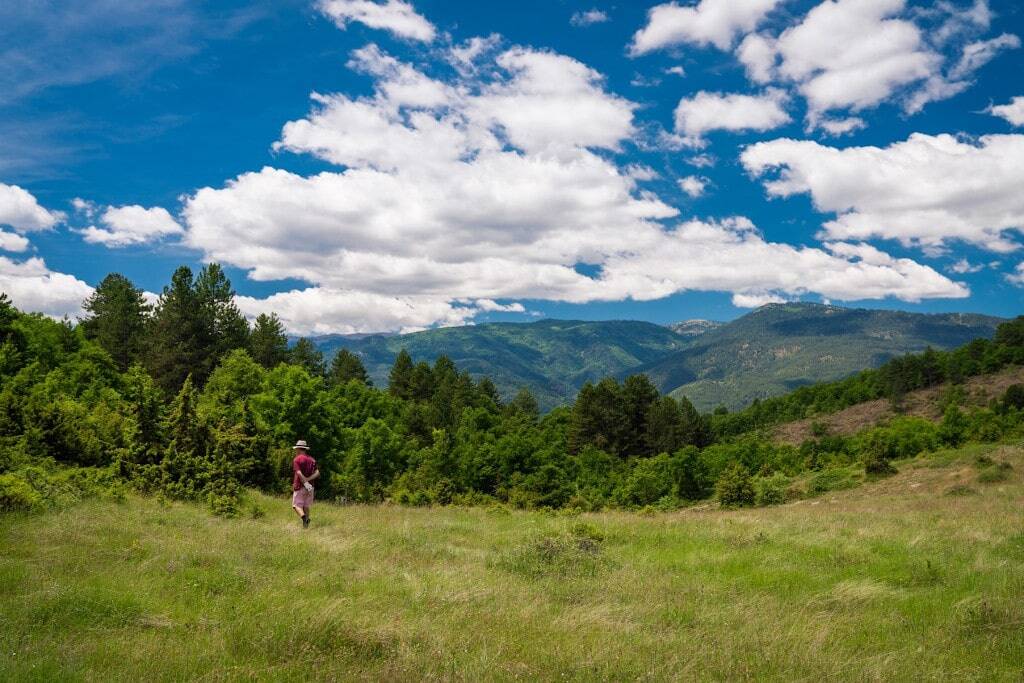
© Nicholas Mastoras
The nicest path: Valia Calda is accessible by car from the village of Perivoli via the Stavros or Krania crossing points. Once you descend into the valley from the dirt road, you’ll find mushrooms in all directions. Nevertheless, if you wish to explore an interesting hiking path, take the one along the Arkoudorema stream leading to the village of Vovousa.
The community often comes together for mushroom hunting events, celebrating the joys of the wild harvest.
In Pilio, mushroom hunting is an integral part of the local culture, enriching the region’s culinary traditions.
Every autumn, mushroom hunting brings families together, sharing skills and stories of the hunt.
In these rural landscapes, mushroom hunting feels like a treasure hunt waiting to unfold.
During your journey, remember to embrace the spirit of mushroom hunting and respect nature’s gifts.
What else you’ll see: The entire region makes up the Valia Calda National Park, which constitutes the core of the Pindus National Park. In a valley confined by mountains reaching heights of more than 2,000 meters, with rich vegetation (that erupts in color in the autumn), dense forests, streams, rare plant species, birds, reptiles, amphibians, mammals – including wolves and bears – the best thing to do here is to take endless strolls in nature, either by car or on foot. – Olga Charami
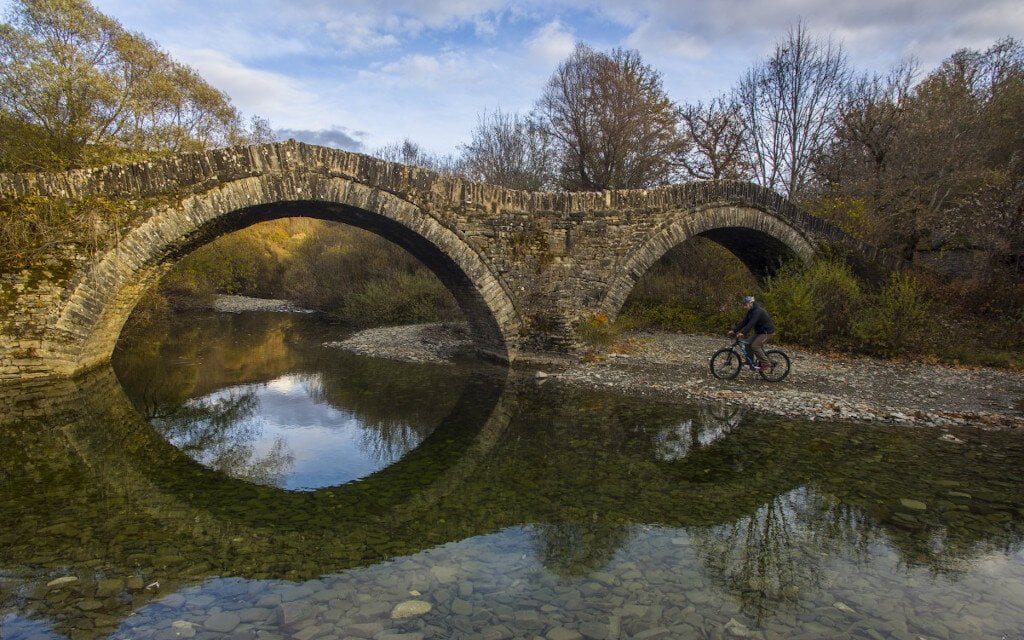
© Clairy Moustafellou
Mushroom hunting adventures can lead to unforgettable moments surrounded by breathtaking scenery.
2. ZAGORI
As you embark on mushroom hunting excursions, the thrill of discovery awaits in every corner.
Locals hold the knowledge of the best mushroom hunting spots, sharing their wisdom with newcomers.
The community thrives on the joys of mushroom hunting, encouraging sustainable practices and respect for nature.
Due to the absence of industrial activity in the region, Zagori – and, more generally, all of Epirus – could lay claim to the title of the purest area in Greece. As such, its land yields mushrooms of excellent quality (fungi are known to absorb pollutants from the atmosphere and soil).
The great variety of mushrooms found in the region reflects the size of its forest and the diversity of its vegetation. Some of the mushrooms are more special than others, such as a few uncommon chanterelle species and the famous lion’s mane (Hericium erinaceus). This rare, medicinal fungus grows in mature oak forests, which have generally suffered degradation in Greece, but not in Zagori.
The nicest path: The trail that begins outside Kipi village and goes East towards Fragades is an easy one. Walking along this path, you will find a great variety of mushroom species – even in the summer, too.
What else you’ll see: As you enjoy endless walks around the villages in Zagori, you will encounter incredible architecture, stone bridges and beautiful small churches. In the central part, visit Dilofo, Koukouli, Kapesovo, Vitsa and Monodendri. In the west, make stops at Aristi, Mikro Papigo and Megalo Papigo. – Olga Charami
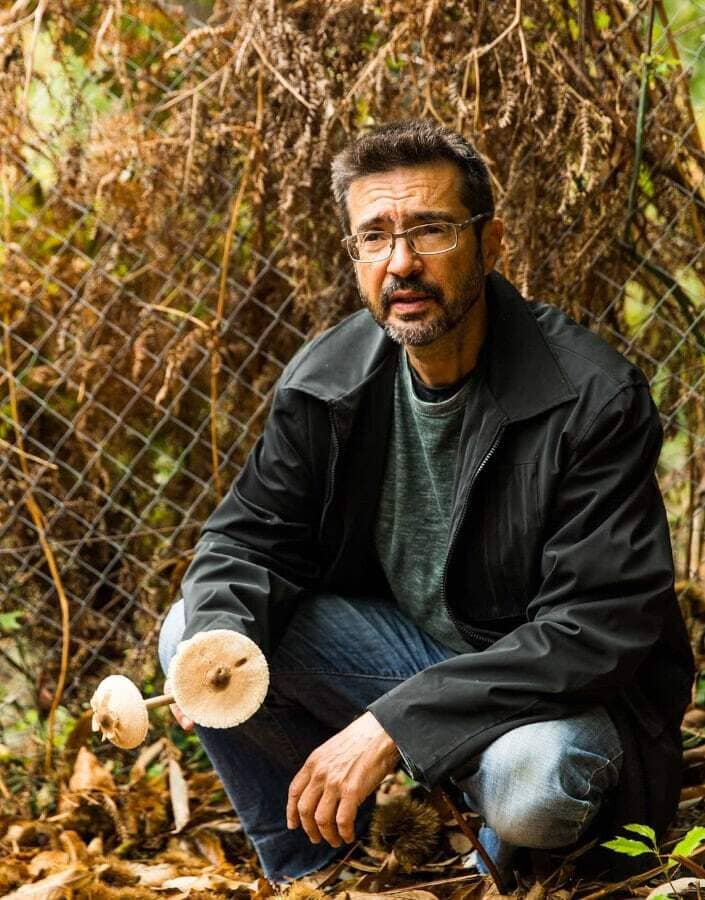
© Dimitris Vlaikos
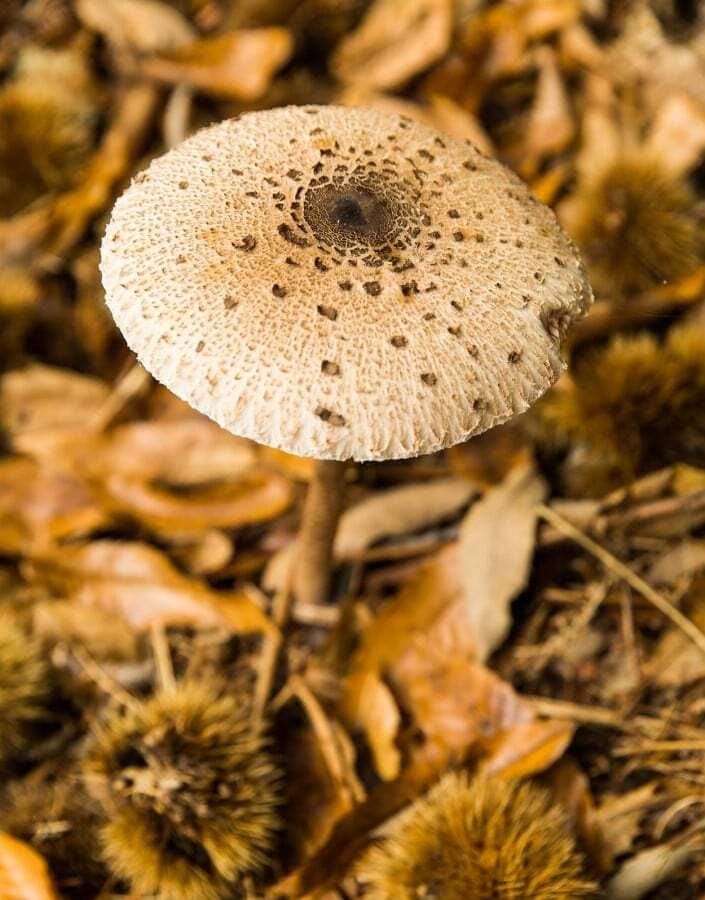
3. PILIO
Families often bond over mushroom hunting, sharing their favourite spots and secret recipes.
In Pilio, the local knowledge of mushrooms is impressive: fungi form part of its inhabitants’ daily lives, and even small children can differentiate the most common edible species. In autumn, mushroom and chestnut picking are combined, as wild mushrooms grow around the trees in mountain chestnut groves.
The first mushroom of the season that emerges here is the parasol mushroom (Macrolepiota procera, or gourgouliana to the locals), followed by Caesar’s mushroom and porcini.
The legacy of mushroom hunting continues as locals pass down their traditions to younger generations.
More species can be found in the villages of East Pilio, from Zagora and Aghios Dimitrios to Mouresi and Tsagarada. Thanks to the high levels of precipitation, the region’s dense forest favours the growth of mushrooms.
The nicest path: Pilio brims with paths and, depending on weather conditions, you can spot mushrooms anywhere in the woods around the villages of eastern Pilio. The path that goes from the villages of Hania to Makrirrachi is worthwhile, as are the Tsagarada-Mouresi and Mouresi-Kissos routes.
What else you’ll see: This is the ideal season to visit Zagora and stock up on fresh Pilio apples at Zagorin, the Agricultural Cooperative of Zagora–Pilio. – Lina Kapetaniou

© Alexandros Avramidis

© Alexandros Avramidis
4. KASTORIA
Vitsi is filled with porcini mushrooms, and you can also find morels on the other side of Kastoria, close to Argos Orestiko.
Of course, mushroom pickers are like fishermen: they never reveal their richest hunting grounds. However, the members of the Kastoria-based Association of Mushroom Friends of Western Macedonia are willing to share their secrets. Founded in 1999, the association has developed a rich range of activities that include festivals, seminars, meetings and thematic events.
Visitors to the area often engage in mushroom hunting, learning about local species and their uses. Every mushroom hunting experience is unique, filled with the promise of adventure and discovery. If you’re looking to explore, mushroom hunting in Greece offers an exciting adventure for everyone. The thrill and joy of mushroom hunting create unforgettable memories for those who participate. Mushroom hunting remains a cherished activity, connecting people with nature and their roots.
An old habit in the area, mushroom picking is practised by many locals. The region also holds a record: in October 2010, the then association president Giorgos Setkos discovered the first white truffle in Greece; as a result, Greece joined the small list of countries known to be home to one of the rarest and most expensive kinds of fungi.
The nicest path: Starting in Kastoria and heading towards Vitsi Ski Centre, you will crunch through thick layers of dry autumn beech leaves. Make a stop at Oxia and Vissinia villages and follow the forest tracks that lead off from the main road.
What else you’ll see: Lake Kastoria, the traditional Dolcho neighbourhood with its Macedonian mansions, and the town’s many Byzantine churches. – Lina Kapetaniou
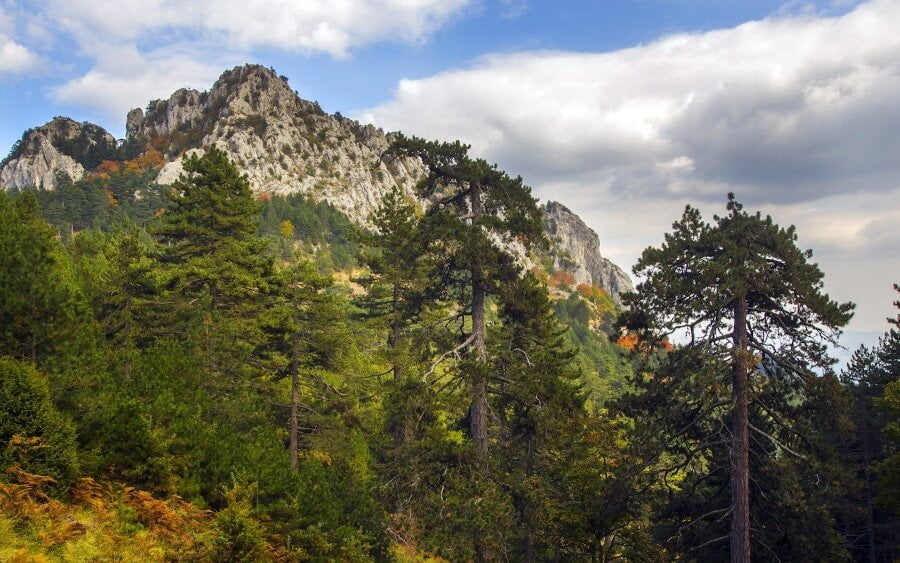
© Clairy Moustafellou
5. GREVENA
Grevena is without a doubt the Greek mushroom capital: Aside from being home to a great number of mushroom lovers, it also has a Mushroom Park where related events are held.
In Grevena, however, mushroom picking and consumption are not a recent trend. Locals have always collected mushrooms, which can be found in all homes, fresh or dried. Indeed, they were a particularly crucial part of the diets of the locals during World War II and the Greek Civil War.
For some years now, thanks to the work of different mushroom associations and local authorities, mushroom picking has been developed as a tourism attraction, and the number of species known to collectors has increased.
The nicest path: The easy route that goes into the Kastraki urban forest, on the outskirts of Grevena, is ideal for families. In this pine forest, mushrooms grow both in autumn and spring. Alternatively, you can take the wide path that starts just outside Zakas village in the old summer camps and reaches the top of Mt Orliakas (1,464m.)
What else you’ll see: Many stone bridges in the villages of Grevena, such as those of Zakas, Portitsa and Liatissas close to Spileo village, and the Kagelia and Aziz-Agha close to Trikomo. – Lina Kapetaniou
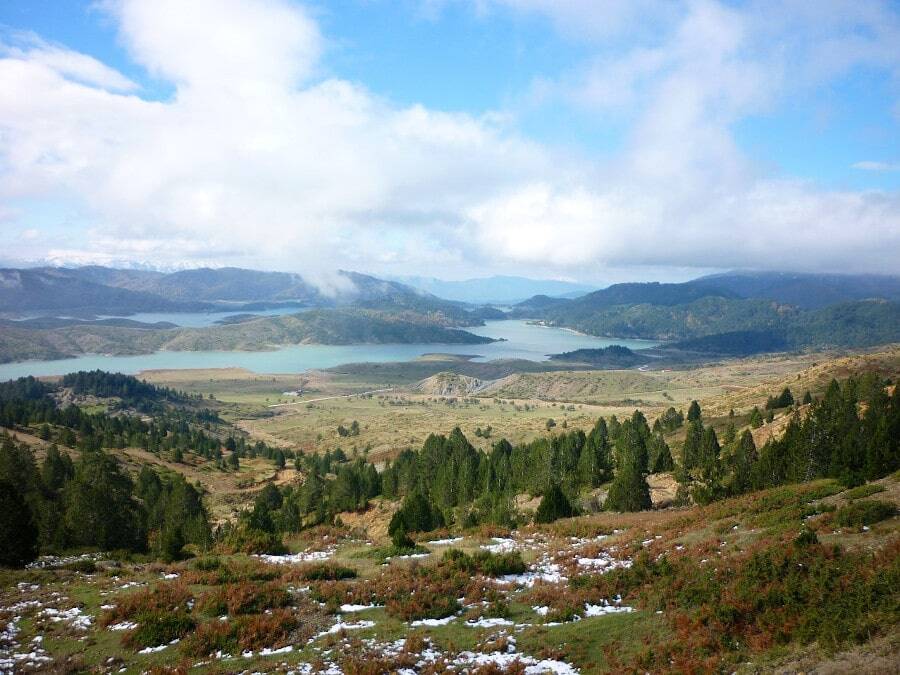
© Shutterstock
6. METSOVO
Metsovo is a popular destination for mushroom lovers as nearly all edible mushroom and truffle species can be found here. Its dense beech forests and high elevations attract mycophiles even in the summer.
Porcini, chanterelle, morel and red pine mushrooms – in other words, particularly delicious mushrooms – grow in abundance both in Mestovo and in the broader region of eastern Zagori. Most of these emerge twice a year – in spring and in autumn – depending on the rain, temperature and elevation. Special mention should be made of the golden trumpet mushroom, which thrives in Metsovo’s pine forests and to the truffles, too, which owe their abundance to the presence of wild boars, which spread the fungus via their droppings.
The nicest path: On the path that connects Metsovo itself with Aoos Springs Lake, chances are you will encounter a plethora of fine species, first in the pine woods and later in the beech forest.
What else you’ll see: Walk around in the village’s alleys of solid stone houses. There you will meet elderly locals who often wear traditional dress. Visit the Metsovo Folk Art Museum (Tel. (+30) 26560.410.84), the Averoff Museum and the Katogi Averoff Winery, which organizes mushroom excursions together with the Troufa Club and which, among other things, is a pioneer in the development of the first Greek truffle trees (where the fungus is cultivated along with specific species). – Olga Charami

© Clairy Moustafellou
7. CHANTERELLES AT THE MUSEUM
The award-winning Mushroom Museum, which shares a location with the equally remarkable Natural History Museum of Meteora, seeks to let visitors in on the secrets of the most exceptional fungi, ranging from the impressive and toxic fly agaric (Amanita muscaria) to common morels and white truffles.
Natural-colour, precise replica sculptures of the mushrooms in three different phases of their biological cycle are housed in corresponding artificial ecosystems. Visitors can access information about the various mushrooms directly on their mobile phones or tablets by scanning the different QR codes in the museum halls.
The brand-new wing, built with the contribution of the University of Thessaly, is even more impressive: it exhibits 12 of the most therapeutic species, as well as 23 edible ones, in a 3D display that uses spatial augmented reality. Additionally, this lively museum organises strolls, tastings and seminars; it also hosts a cafeteria, as well as a shop selling mushroom products (Tel. (+30) 24320.249.59, meteoramuseum.gr, open Tue-Fri 10:00-16:00, Sat-Sun 10:00-17:00).
The Mushroom Museum in the village of Lavda, Grevena, features a small exhibition of both mushroom replicas and real, fresh ones, which are changed every week. Its experts will tell you all about the area’s fungi; however, the museum is open to groups by appointment only. Contact the Lavda Cultural Association (Tel. (+30) 698.749.7201, Dimitris Bolis). – Olga Charami
Source: greece-is.com

